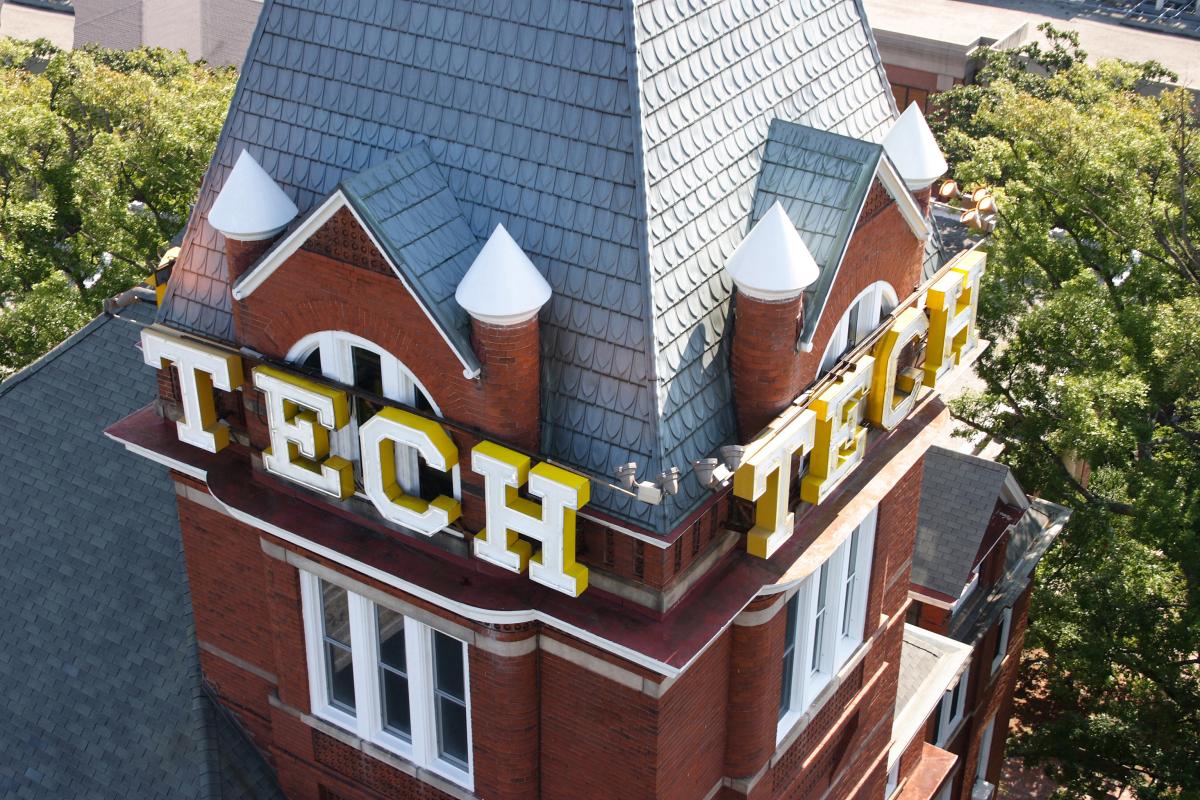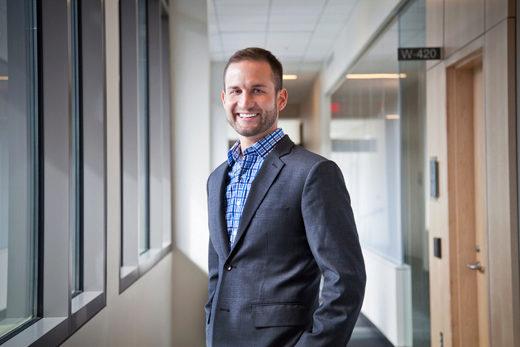
As the first student to graduate from the Atlanta campus of the Global Biomedical Engineering joint Ph.D. program conducted in partnership with Emory University, Georgia Institute of Technology and Peking University (PKU), Gray has logged academic experience at all three institutions.
Created by the Emory School of Medicine and Georgia Tech College of Engineering, the interdisciplinary program represents a collaboration between public and private universities that is both highly unusual and highly acclaimed — since its founding in 1997, the BME program has been ranked second in the nation by U.S. News and World Report.
The joint program supports a new paradigm within Emory's Laney Graduate School that imagines graduate education on a global scale, allowing U.S. and Chinese students to learn and work at both their home campuses and those of the partner institutions. A single dissertation satisfies the thesis requirements of all three universities.
Gray's decision to join the first cohort of graduate students entering the Emory-Georgia Tech-PKU program in 2009 was influenced more by the program's dedication to international learning — in addition to dividing time between Emory and Georgia Tech, students spend a year of study and research at PKU, which Gray considers one of China's premier institutions.
"At other schools, graduate study abroad programs are subject to professor funding, existing collaborations and faculty willingness," Gray notes. "Here, it is fully supported."
During the first two years of his program, Gray attended classes at both Emory and Georgia Tech, co-advised by professors in labs at both schools. His third year was spent in China, fulfilling a desire "to interface with people scientifically and culturally."
"I love the idea of working with people, learning about differences not as a way to separate us, but to see how a lot of our fundamentals are the same," Gray recalls. "Our world is getting smaller. In the future, the world will be more interconnected. I wanted to be a part of that."
Healing the human heart
As a chemical engineering undergraduate at Oregon State University, Gray had long wrestled with a decision about his next academic step.
It was while performing church mission work in Louisiana following Hurricane Katrina that his eyes were opened to the possibilities of medicine. He vividly remembers working with heart attack survivor Robert Weaver, who would tell him, " 'My heart is weak today — other parts of your body heal, but your heart doesn't heal.' "
The words haunted him: "I thought nearly every part of your body was regenerative, except for the brain. But I learned that it's essentially true — cardiac muscle tissue doesn't regenerate, it forms a scar (that doesn't contract), which can sometimes lead to heart failure. The big problem after heart attacks is that heart muscle dies."
Instead of becoming a physician who prescribed treatments, Gray decided that he wanted to develop them: "I thought, 'Wouldn't it be great to discover what could work or work better?' I wanted to be able to fix that."
So it was little surprise that his research came to focus on healing the human heart.
Gray's first year of research was spent exploring how microscopic nanoparticles could be used as a vehicle to deliver therapeutic drug molecules directly to heart muscle cells to aid cardiac function.
While in China, his focus expanded to enhancing the heart's regenerative potential, specifically by improving blood vessel formation to help increase blood flow to the heart. His research was built upon employing "a new type of architecture" for cell-based drug delivery, using bow-tie dendrimers — a class of radially symmetric, branched polymers.
Freedom to imagine, explore
Since returning to Emory, Gray's work has centered on an emerging realm of stem cell therapy, specifically the regenerative potential of exosomes — small molecules loaded with microRNA and proteins which are excreted by cells, then signal other cells to help form blood vessels and mitigate scar formation in damaged heart tissue — in amplifying the body's natural beneficial response.
It's possible that someday, a pharmaceutical company could "farm" and concentrate those secreted exosomes, which might then be injected directly into damaged heart tissue, Gray notes.
He's already working with Emory on filing a provisional patent surrounding his research. "That's one of the great things about the Emory/Georgia Tech program —there is great biomedical research going on, but also research related to the translational application side," Gray says. "This is something that could actually be helping patients within the next decade."
When Gray came to the program, he hoped to be involved in developing new therapeutics. But in doing that, he didn't expect to find the freedom to imagine and fully explore his own research questions.
"My first two (research) projects were the result of brainstorming with my advisers, but my third project was really me asking, 'How can I work with what the body already does? What would be the next step?'" he says.
"When I proposed it, my adviser thought it was a bit of a stretch, but he let me take the risk. I knew that I would be doing research, working in developing new therapies, but I didn't know one of them would be my own idea. That instead of being a lab rat, I would be able to develop into a scientific thinker. That's something to applaud about the program — great institutions do great research, but also create great graduates. I didn't forecast myself to be an independent research thinker."
Gray defended his doctoral work in March, but has remained at Emory to continue collaborating with his research adviser Michael Davis, associate professor and director of the Pediatric Center for Cardiovascular Biology at Emory School of Medicine. Gray plans to submit his latest research for publication this summer.
"While many were skeptical of this program because it involved a year overseas in the middle of training, Warren and I embraced it as a chance to take part in a global research setting, gain new skills, and really cultivate his independence," Davis says.
"Taking part in this program enabled Warren to be a more independent thinker, take well-thought-out risks and defend his work to others," Davis says. "I think he will be doing amazing things in the near future."
By participating in two different commencement ceremonies this month, Gray knows that he's "a bit of an anomaly" — usually Emory and Georgia Tech BME students pick one school to walk at, "but I've worked at both institutions, so I'll walk at both institutions," he says.
Cheering him on will be his wife, Whitney Gray, an Emory physical therapy student with an undergraduate degree in neuroscience. By the time they both graduate, "we will have a total of 46 years of education between us," he jokes.
His summer plans include a post-doc position in the lab of Charles Searles Jr., associate professor of cardiology at Emory and the Atlanta Veterans Administration Medical Center, and teaching an engineering class through Georgia Tech in Ireland.
"Now that I'm transitioning from being a student to a fully contributing member of society, it's definitely a feeling of completion, but also a bit of 'What am I now?'" he says.
His master plan? "I've been talking to people back at Oregon State University about applying for a faculty position," Gray says. "My goal is to be back there in 2015."
